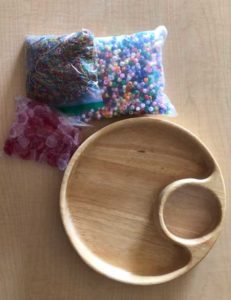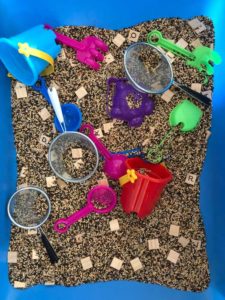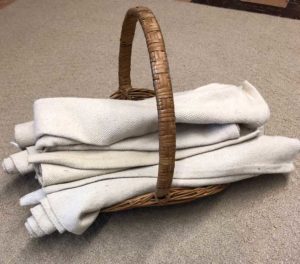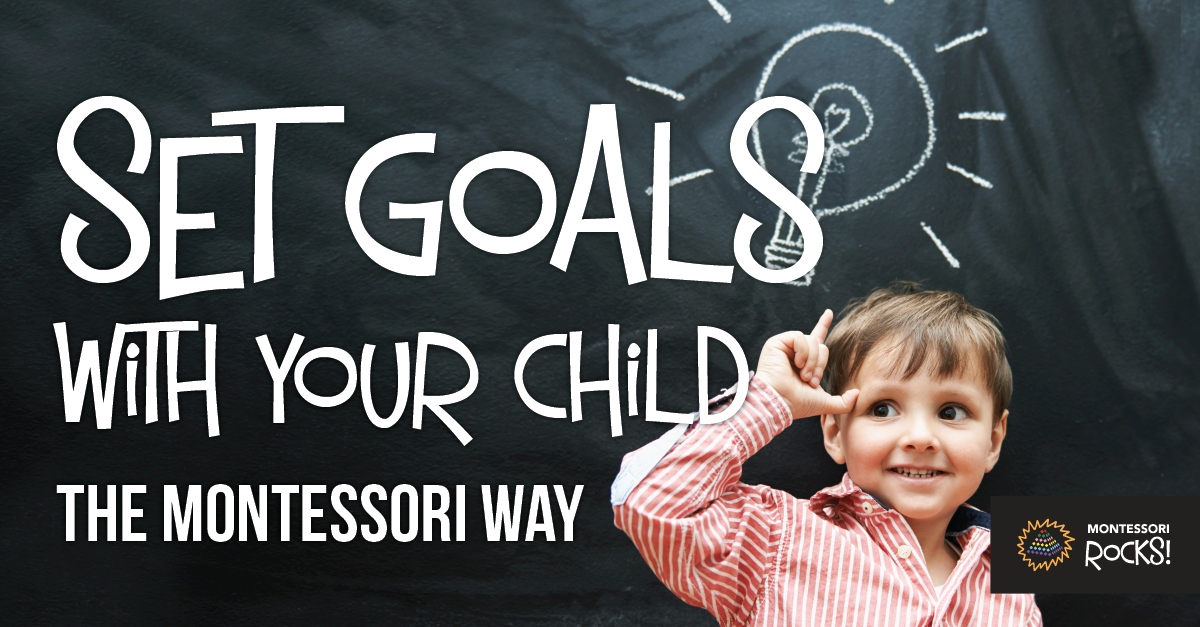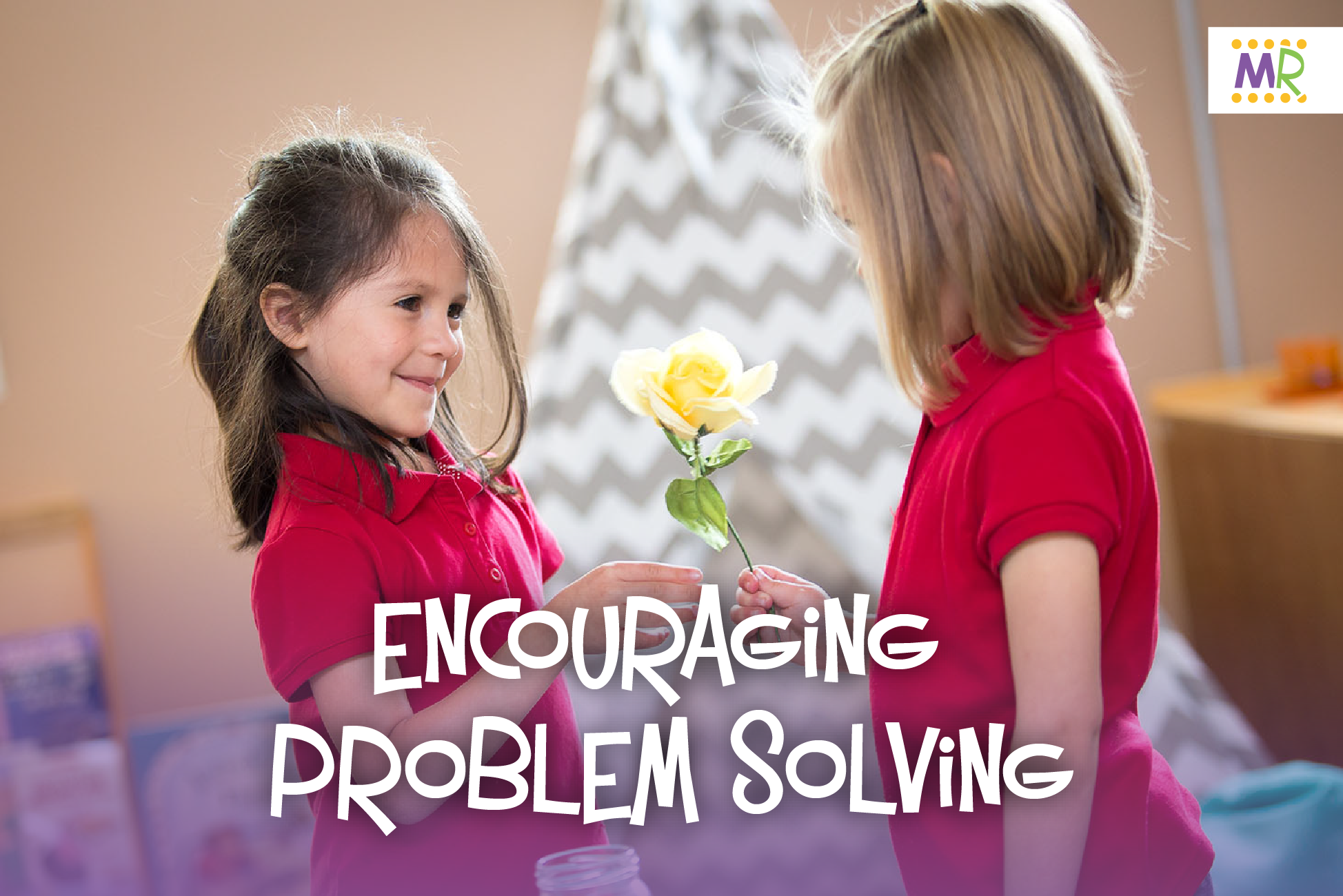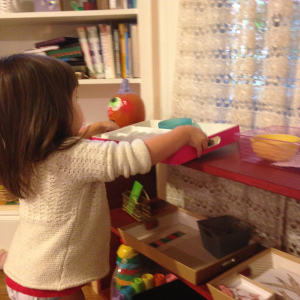Practical life
The practical life exercises are one of the pillars of the Montessori method and in them is the key for children to become more independent every day.
The practical life activities are an important part of the day to day, the child repeats them and perfects the movements, which contributes to the development of physical coordination.
The practical life materials provide the means for the total development of the child, of all aspects of his personality, they are "a help for life". Practical life is the area where the activities of daily life are practiced. The child practices for example how to take care of himself by listening to his needs (combing his hair, washing his hands, buttoning his buttons, etc.), how to take care of the indoor environment (sweeping, mopping the floor, watering flowers, etc.).
The development and control of movement is one of the purposes of all practical life exercises, and this movement is essential for the development of the intellect; as Maria Montessori said "the hand is the instrument of intelligence". Children develop their will, self-discipline, concentration and confidence through practical life exercises.
Sensorial
Sensory material helps the mental order, and it makes sense through unconscious absorption. Sensitive periods are windows of opportunity to absorb knowledge and sensations perceived by the senses, hence the name sensory.
A perception is established in three ways: Relation, between objects, function of each object and qualities of an object.
Sensory material can be considered as a materialized abstraction, because it presents colour, dimension, form, smell and sound in a tangible, distinct and gradually ordered way so that its qualities can be classified and analyzed.
The sensory material takes advantage of the richness of the impressions that the child has already received in the first three years of life and elevates to a higher level of order and classification, favors observation and opens paths to child intelligence.
The sensory material will continue to develop:
- Concentration and repetition capacity
- Ability to complete jobs
- Order and logical sequence
- Patience
- Self-control
- Material care
Language
According to Maria Montessori "The language that develops, because it is new in the same child. He develops it naturally; that is to say he has that hereditary power, but he acquires it himself by taking it from the environment".
Spoken language is a very important part of our Prepared Environment. It is the basis of any activity in this area. Its invisible nature indicates that it is found everywhere, on every shelf, in every material. At every moment of the day, and therefore, it is part of the child's life from the moment he enters the Environment.
When the child arrives at the Children’s Home, he has already absorbed a large part of its language, he already possesses it and now we want to enrich it and help it to form more complex structures.
Montessori children first learn to write - spontaneous writing, Maria Montessori defines it as an explosion of writing. Reading comes later as a new explosion.
Reading and writing are achievements that belong only to the child, so the adult can only help and support this process. As an extension of reading, children enter the world of history, geography, and biology.
Mathematics
The teaching of mathematics is introduced at this level for the following reasons:
- The child shows a great attraction for this science
- The child's mind is ready and it is a mathematical mind
- Everything in life is connected to mathematics
The child is interested in exploring this knowledge and Dr. Montessori found how to transmit it, through scientifically designed materials that the child can manipulate in a clear way, explore and establish their own relationships. The material fosters a reasoning activity, which helps her to develop a logic, which had been thought impossible to reach for this age and which each child carries out day by day with his work, achieving a mental and systematic progress.
The child is introduced in this area with concrete materials, with sensorial impressions, being exposed to diverse experiences that help him to develop the necessary thought and reasoning.
